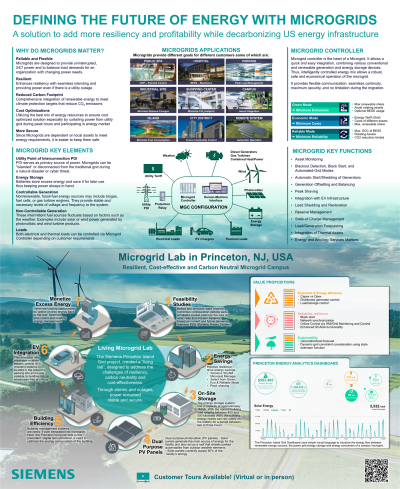Back

Grid Integration
Defining future of energy with Microgrids. A solution to add more resiliency and profitability while decarbonizing US energy infrastructure
Tuesday, September 12, 2023
4:30 PM - 5:30 PM PDT
Location: Poster Area, Booth #11024, Level 1, Venetian Expo Hall


Hura Masroor
Business Development Manager, EA
Siemens Industry
Conroe, Texas, United States
Poster Presenter(s)
Description and Background: In electrical infrastructure around the globe, there has been a paradigm shift from centralized power dispatch towards de-centralized approach utilizing microgrid technology. Microgrids, with onsite generation capabilities, serve as localized grids thus maintaining power supply to hospitals, community, campuses etc. even if they are disconnected from utility grid due to a natural disaster or cyber threats. Microgrids go even further by reducing the carbon footprint deploying renewable sources for power generation. Cost savings are ensured by optimizing the best mix of energy resources especially during peak hours to curtail the import of power from utility grid during peaks. In a nutshell, microgrids are defining the future of energy by providing a system which is decentralized, resilient, carbon neutral and economical.
In this paper, we will discuss microgrid design deployed in Princeton, New Jersey lab, having various assets like solar panels, utility grid, batteries, campus load, electric vehicle charging stations etc. We will also discuss microgrid controller features including blackout detection, black start, automated grid modes, voltage, and frequency modes as well as tie line regulation modes which are contributing towards energy efficiency, carbon neutrality and resiliency.
In this paper, we will discuss microgrid design deployed in Princeton, New Jersey lab, having various assets like solar panels, utility grid, batteries, campus load, electric vehicle charging stations etc. We will also discuss microgrid controller features including blackout detection, black start, automated grid modes, voltage, and frequency modes as well as tie line regulation modes which are contributing towards energy efficiency, carbon neutrality and resiliency.
